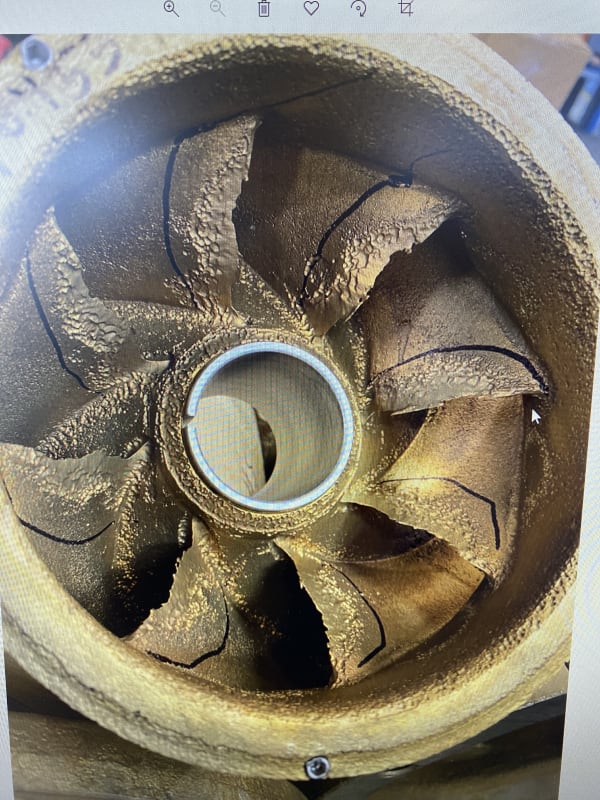Mech5656
Mechanical
- Aug 2, 2014
- 127
Hello,
We have a pump used in sea water that needs repair and the impellers are washed out and pitted. Impellers are made from Bronze 630 and we are thinking to upgrade them to 316 SST. Is that a good upgrade? Do you recommend 316 SST instead of bronze in sea water?
I have attached picture of impeller condition after removing from sea water. Unfortunately, we don’t know how old these impellers are because of no documentation left by previous owner.
We have a pump used in sea water that needs repair and the impellers are washed out and pitted. Impellers are made from Bronze 630 and we are thinking to upgrade them to 316 SST. Is that a good upgrade? Do you recommend 316 SST instead of bronze in sea water?
I have attached picture of impeller condition after removing from sea water. Unfortunately, we don’t know how old these impellers are because of no documentation left by previous owner.

